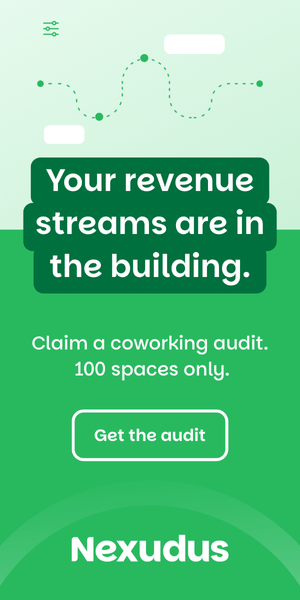- Sensors can monitor occupancy rates with accuracy and in real-time.
- You can optimise and maximise cleanliness in your space.
- The resulting data helps you proactively plan for your future.
How can you maintain your physical distancing guidelines and maximise your occupancy levels while ensuring the cleanliness of your coworking space? It’s a tricky conundrum and a simple sensor could provide the answer.
What are occupancy sensors?
Occupancy sensors are a way to analyse how your coworking space is utilised. You just pop a series of sensors in the spaces you want to monitor and – voila – these gadgets capture data on how and when your spaces are used. This data can be used in a multitude of ways and – in our current pandemic climate – many workspaces are using sensors to optimize both their cleaning rotas and occupancy levels.
What do occupancy sensors measure?
Depending on the sensors you choose, you can monitor a range of metrics including: average utilisation rates, peak and off-peak utilisation rates, and your person-to-desk ratio across your space. You can also place sensors in individual rooms and on your desks, helping you monitor occupancy rates.
How do they work?
There are plenty of options to choose from, but most sensors rely on passive infrared (PIR) to detect motion and heat signals to monitor your occupancy rates. This has an added advantage – no personal or health information is captured by these sensors. Most solutions also come with encryption to further enhance your data security and rely on long-life batteries, which you should only need to change every couple of years.
These tiny sensors (usually just a few centimetres in size) can be placed in public areas and even under desks. So, when an individual vacates a room or desk, this action is automatically recorded by the system. Likewise, the sensor can provide data on whether someone is present at a desk or in a room, counting the number of occupants.
What can I do with that information?
The simplest way to use your sensor-captured information is to monitor your occupancy rates across your space. This is more accurate than simply relying on your meeting booking system, for example, where a meeting may not take place or where all the attendants may not actually attend (but still show up on your system).
If you want to get clever, you can do this in real-time and monitor how your space is being used, linking this to your current booking system. So, if a desk or room is free (and cleaned), then you can flag it as available with the minimum downtime for that area.
You could even link this information to your digital signage, clearly showing what areas are and are not available. If, for example, a meeting room or a shared space – like your kitchen – reaches its maximum occupancy level, you can clearly display this information and tell people not to enter the space.
If you want to get really clever, you can link this information to your cleaning rota – and message your cleaning staff when a desk or room is vacated. They can then clean this space and flag it as clean once their work is complete, making it available to your members again (via your integrated booking system).
What benefits does that bring to a coworking space?
Maximising your occupancy rates is the obvious advantage here – you can monitor your space with complete accuracy and make a space available as quickly (and safely) as possible. When a space or desk is available, you can transmit that information directly to your members, using your current room or desk booking tools.
This also builds reassurance with your members, where they can clearly see when a space or desk was last cleaned – an important benefit to build confidence and get your members back in your coworking space. This is also a more efficient way of working, where you don’t need to constantly clean every single desk and space – just the ones that have been used.
This information can also be mined to gain valuable insights about your space. If, for example, a meeting room is underused but you’re seeing high demand for desks, you could transform the room into desk space. This also makes life easier for your members, who can access real-time information on available desks and meeting rooms, allowing them to book with confidence in your space’s capacity and cleanliness.


 Dr. Gleb Tsipursky – The Office Whisperer
Dr. Gleb Tsipursky – The Office Whisperer Nirit Cohen – WorkFutures
Nirit Cohen – WorkFutures Angela Howard – Culture Expert
Angela Howard – Culture Expert Drew Jones – Design & Innovation
Drew Jones – Design & Innovation Jonathan Price – CRE & Flex Expert
Jonathan Price – CRE & Flex Expert












